

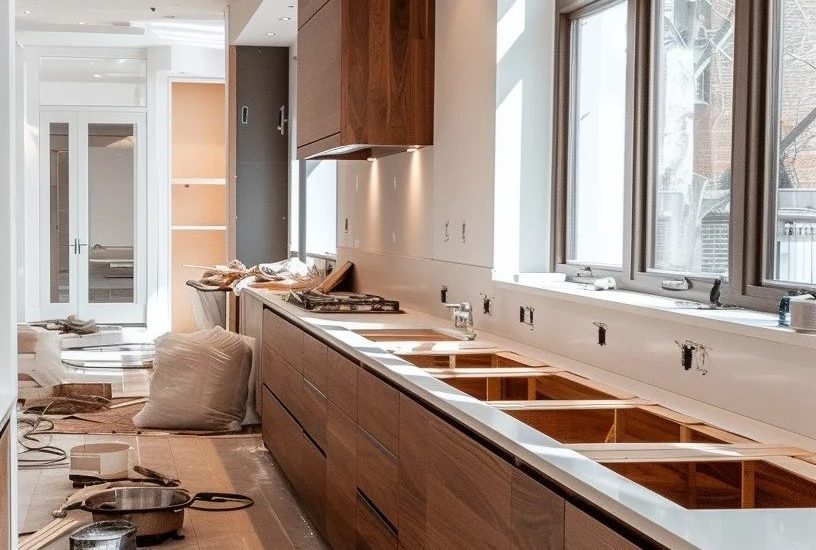
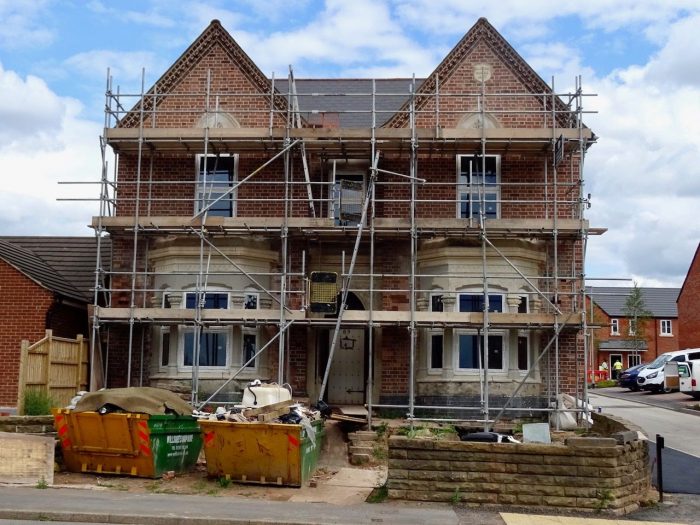
In this guide on how to home renovation, we will provide you with tips and tricks to ensure a successful project. Renovating your home is an exciting yet daunting process. Whether you’re looking to modernize an outdated space, improve functionality, or increase property value, the key to a successful renovation is careful planning and execution. A well-thought-out renovation doesn’t just enhance aesthetics but also makes your home more efficient, comfortable, and tailored to your needs. However, without the right strategy, it can quickly become overwhelming. This guide will walk you through every step of the process, from planning and budgeting to execution and final touches, ensuring that your home transformation is as seamless as possible.
Understanding how to home renovation is essential for any homeowner looking to enhance their living space effectively.
Home renovations are not just about making a space look better. They can also improve the overall flow of a home, make it more energy-efficient, and ensure it meets the evolving needs of your household. Renovations can increase storage, make spaces more accessible, and even improve indoor air quality with better ventilation and materials that reduce allergens. While the process can feel overwhelming at times, breaking it down into manageable steps helps make the journey more enjoyable and rewarding.
When considering how to home renovation, it’s important to assess both your needs and your budget.
Another critical factor in how to home renovation is ensuring that the upgrades are energy-efficient.

A home is more than just a place to live—it’s an investment. Renovating your home not only improves your quality of life but also increases its resale value. In today’s housing market, buyers are looking for modern, energy-efficient homes with functional spaces. A well-executed renovation can yield an impressive return on investment, especially in key areas like kitchens and bathrooms. But beyond financial benefits, a renovation allows you to create a space that reflects your lifestyle, whether that means an open-concept living area, a more organized kitchen, or a cozy outdoor retreat.
Beyond personal benefits, home renovations contribute to sustainability. Older homes often lack energy-efficient insulation, appliances, and windows, which results in higher utility bills and a greater environmental impact. Making energy-efficient upgrades not only saves money in the long run but also aligns with the global push toward greener living. Additionally, well-planned renovations can make a home safer by addressing outdated electrical wiring, plumbing issues, and structural wear and tear that might not be immediately visible.
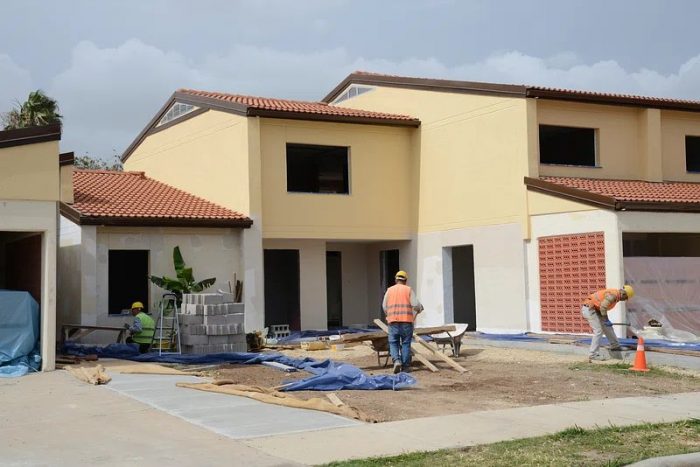
Knowing how to home renovation can help you increase your home’s value significantly.The success of any renovation project starts with a solid plan. Before you even pick up a hammer, take time to outline your goals. Are you looking to add space, improve energy efficiency, or simply modernize an outdated look? Once you define your goals, establish a budget that takes into account not only construction costs but also additional expenses such as permits, unexpected repairs, and temporary accommodations if necessary. Researching financing options can also make a big difference in managing costs effectively.
One essential part of the planning phase is prioritizing your projects. While it might be tempting to do everything at once, focusing on high-impact areas such as kitchens, bathrooms, and living spaces first can provide the greatest benefits. Additionally, consider whether you will need to hire professionals. Tasks such as plumbing, electrical work, and structural modifications should always be handled by licensed experts, while smaller aesthetic updates may be suitable for a DIY approach.
Another often-overlooked aspect of planning is understanding how renovations will affect your daily life. If you are living in the home during renovations, you may need to set up temporary spaces for cooking, working, and relaxing. Planning for noise, dust, and disruptions in advance can reduce stress and make the process much smoother.

Before any renovation begins, a thorough home inspection is essential. This helps identify structural issues, outdated electrical systems, plumbing concerns, and hidden problems like mold or pest infestations. Addressing these issues early prevents headaches down the road and ensures your renovation goes smoothly. A professional inspection provides a clear roadmap of necessary upgrades and potential problem areas, allowing you to allocate resources efficiently.
For a functional kitchen, understanding how to home renovation plays a crucial role in enhancing the cooking experience. When renovating bedrooms, consider how to home renovation to create a serene retreat. Once you have a clear picture of what needs to be done, work with a designer or architect to finalize your layout. Whether you’re expanding a kitchen, remodeling a bathroom, or creating an open floor plan, good design ensures optimal space utilization and a cohesive aesthetic. At this stage, don’t forget to obtain necessary permits. Many homeowners skip this step, only to face fines or legal complications later. Permits ensure that renovations meet local building codes and safety standards, preventing issues when selling the property in the future. To avoid costly mistakes, learn how to home renovation by setting realistic expectations from the start.
Understanding how to home renovation can also help you stay on schedule and within budget. With all planning and permits in place, demolition and construction can begin. This stage can be messy and disruptive, but proper preparation—such as setting up temporary kitchen areas or sealing off renovation zones—can help minimize inconvenience. As work progresses, stay involved and regularly inspect the quality to ensure everything aligns with your vision. Communicate clearly with contractors to avoid misunderstandings, and be flexible enough to handle any unexpected changes that may arise.
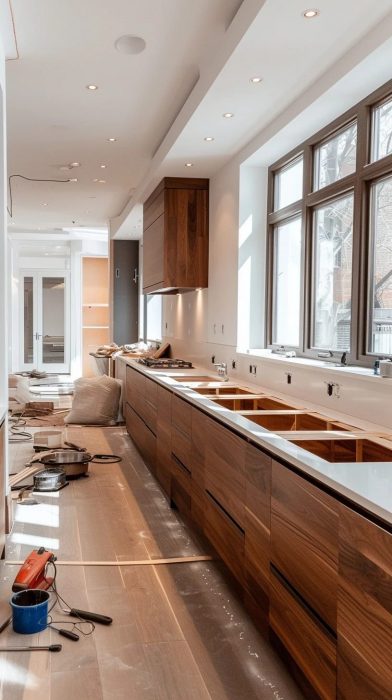
Learning how to home renovation with smart technology will enhance energy efficiency. Consider how to home renovation with renewable resources to further reduce your footprint.
Effective insulation plays a vital role in how to home renovation for energy savings. Each room in your home has different renovation needs. In the kitchen, functionality is key. Upgrading countertops, installing energy-efficient appliances, and optimizing storage can make cooking more enjoyable and efficient. The bathroom, on the other hand, benefits from modern fixtures, improved lighting, and water-saving solutions. Planning how to home renovation requires setting clear timelines for each phase of the project.
Living rooms should prioritize comfort and entertainment, with upgrades such as better seating arrangements, layered lighting, and built-in storage. Bedrooms should be relaxing retreats, featuring calming colors, ergonomic furniture, and smart storage solutions. Outdoor spaces, including patios and gardens, should be designed for both aesthetics and functionality, whether through landscaping, improved seating, or weather-resistant materials that enhance durability.
By following our guide on how to home renovation, you will achieve a beautiful and practical space. One of the biggest mistakes homeowners make is underestimating costs and timelines. Renovations often take longer and cost more than initially anticipated, so always have a contingency budget for unexpected expenses. Another common pitfall is prioritizing aesthetics over quality. While it’s tempting to cut costs with cheaper materials, investing in durability pays off in the long run.
Failing to obtain proper permits is another major error. Skipping this step may lead to fines, forced modifications, or complications when selling your home in the future. Additionally, a lack of clear communication with contractors can result in costly misunderstandings. Regularly checking in on progress and clarifying expectations will help keep your project on track.

Modern renovations go beyond just looks—they also focus on efficiency and convenience. Smart thermostats, such as the Google Nest Learning Thermostat ($189 on Amazon), adapt to your schedule and help reduce heating and cooling costs. Energy-efficient LED lighting, like Philips Hue Smart Bulbs ($49 for a starter kit at Best Buy), not only cuts down on electricity usage but also offers customizable ambiance.
For those looking to harness renewable energy, solar panels are a great investment. SunPower offers high-efficiency solar panels starting at around $10,000 for a full system, but with tax incentives and rebates, they can pay for themselves over time. Smart security systems, such as Ring Alarm Pro ($249 at Home Depot), integrate with automated lighting to enhance safety and convenience.
Additionally, upgrading insulation with materials like Owens Corning Pink Fiberglass Insulation ($50 per roll at Lowe’s) and installing high-efficiency windows such as Andersen 400 Series ($350 per window at Home Depot) can significantly reduce energy consumption, leading to lower utility bills and a more comfortable living space.
To ensure a smooth renovation, start by setting a realistic timeline and budget. Work with trusted professionals and do thorough research before hiring contractors. Prioritize high-impact areas first—kitchens and bathrooms tend to offer the best return on investment. Don’t rush the process; taking the time to plan properly prevents costly mistakes. Lastly, communicate clearly with everyone involved in the project to avoid misunderstandings and ensure your vision is brought to life.
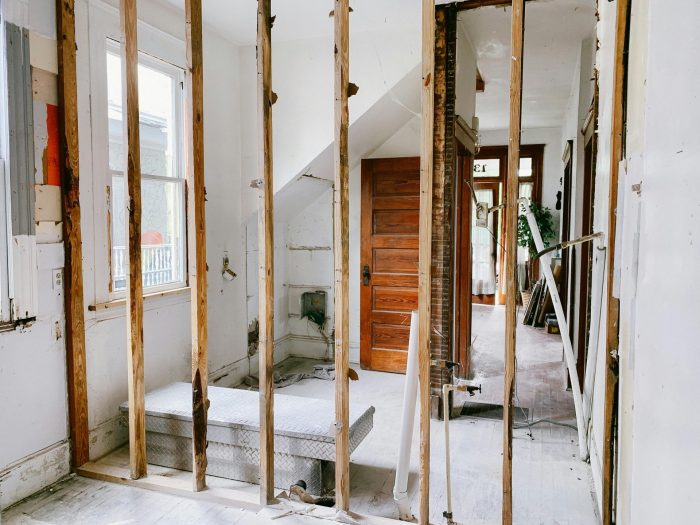
Renovating your home is a journey that requires patience, planning, and a bit of creativity. Whether you’re making small updates or undertaking a full-scale remodel, approaching the process with a clear vision and realistic expectations makes all the difference. Focus on quality, functionality, and efficiency, and you’ll create a home that not only looks great but also enhances your daily life. With the right mindset and preparation, your renovation project can be an exciting and rewarding experience.